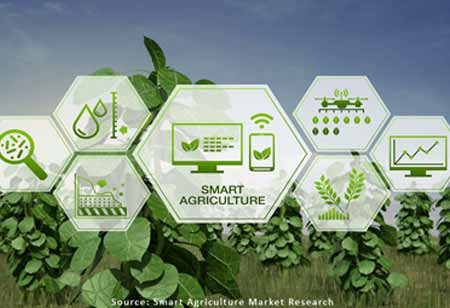

Thank you for Subscribing to Agri Business Review Weekly Brief

Vertical farming is a solution that guarantees productivity when it gets appropriately managed, and it is vital to do a study before planting crops, as some are more economically viable than others.
Climate change and population expansion have shifted focus to the future of agriculture and new methods of food procurement. Vertical farms are not new, but they have recently acquired appeal as an effective solution for a controlled environment. Many customers are pursuing eco-friendly and sustainable lifestyles, which is the driving force behind the advancements. Agricultural innovations and vertical farms will be popular. The worldwide perspective on this problem has expanded. Many searches for agricultural alternatives; giant corporations engage in vertical farming within cities, while others provide technical solutions with home-useable innovations. Technicians must be able to install, monitor, operate, and maintain the system. Vertical farming aims to maximize the utilization of available space. Vertical layers of plant growth get observed. Individuals apply the method on a small scale (in their own homes or communities), whereas agricultural companies can use it in controlled surroundings on a bigger scale. Concerns about resource use, population expansion and food demand, and the desire to consume healthier, insecticide-free foods have raised interest in vertical agriculture. The systems are a valuable instrument for ensuring the market via sustainable production. On a large scale, cultivation centers require employees with superior qualifications and skill sets to work. Many firms are releasing easy-to-use gadgets that allow anyone to cultivate food in their living room, such as lettuce, enabling individuals to grow independently. The Food and Agriculture Organization of the U.N. estimates that 13.8 percent of the world's food gets wasted. Forty-five percent of agricultural products lose nutritious value due to the distance between their fields and markets. Several people are analyzing and implementing measures to improve agricultural enterprises' access to families to reduce these numbers. In vertical farming, the environmental conditions of temperature, light, and humidity are optimized, assuring that no different substances are required for plant growth, habitat preservation, or pest control. Some resemble miniature freezers, while others resemble small bush towers. Vertical farming, managed correctly, constitutes a solution that ensures productivity. Hydroponics, aquaponics, and substrate systems are among the strategies that can get utilized. Vertical farming commercial crops include kale, lettuce, chives, strawberries, mint, and basil. Many fruit, flowering plant, vegetable, and delicate herb species can be grown in this manner. Conducting a study before planting crops is essential, as some are more economically viable than others. Not only is vertical farming great for producing vast numbers of crops in tiny places, but it also guarantees water conservation and the year-round production of contaminant-free produce. Fresh products can be obtained out of season, ensuring healthier and more sustainable food and offering price savings. The local availability of fruits and vegetables eliminates the use of fossil fuels as a pollutant source, as transportation and travel times are shortened. It is crucial in regions with harsh weather conditions and a scarcity of arable land. The systems do not directly utilize solar energy, so they consume a great deal of electricity and require backup power in the event of a blackout. LED technology can be more cost-effective and can get powered by renewable energy sources such as solar panels. Vertical farming solves significant problems in agriculture, such as a lack of or overstock of farm produce, excessive use of pesticides and fertilizers, weakened soils, and even unemployment. Vertical farming is the solution for decreasing farmland. Several individuals demonstrate resourcefulness using recycled plastic bottles, PVC pipes, canning jars, cans, and glass bottles. Utilizing sunlight, selecting plants that will thrive, and being resourceful are all encouraged when vertical farming with little resources. So establishing a vertical farm will accompany them throughout the year, allowing them to save money and eat healthier.
However, if you would like to share the information in this article, you may use the link below:
https://www.agribusinessrevieweurope.com/cxoinsight/the-rise-of-vertical-farming-nwid-803.html
